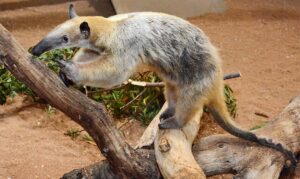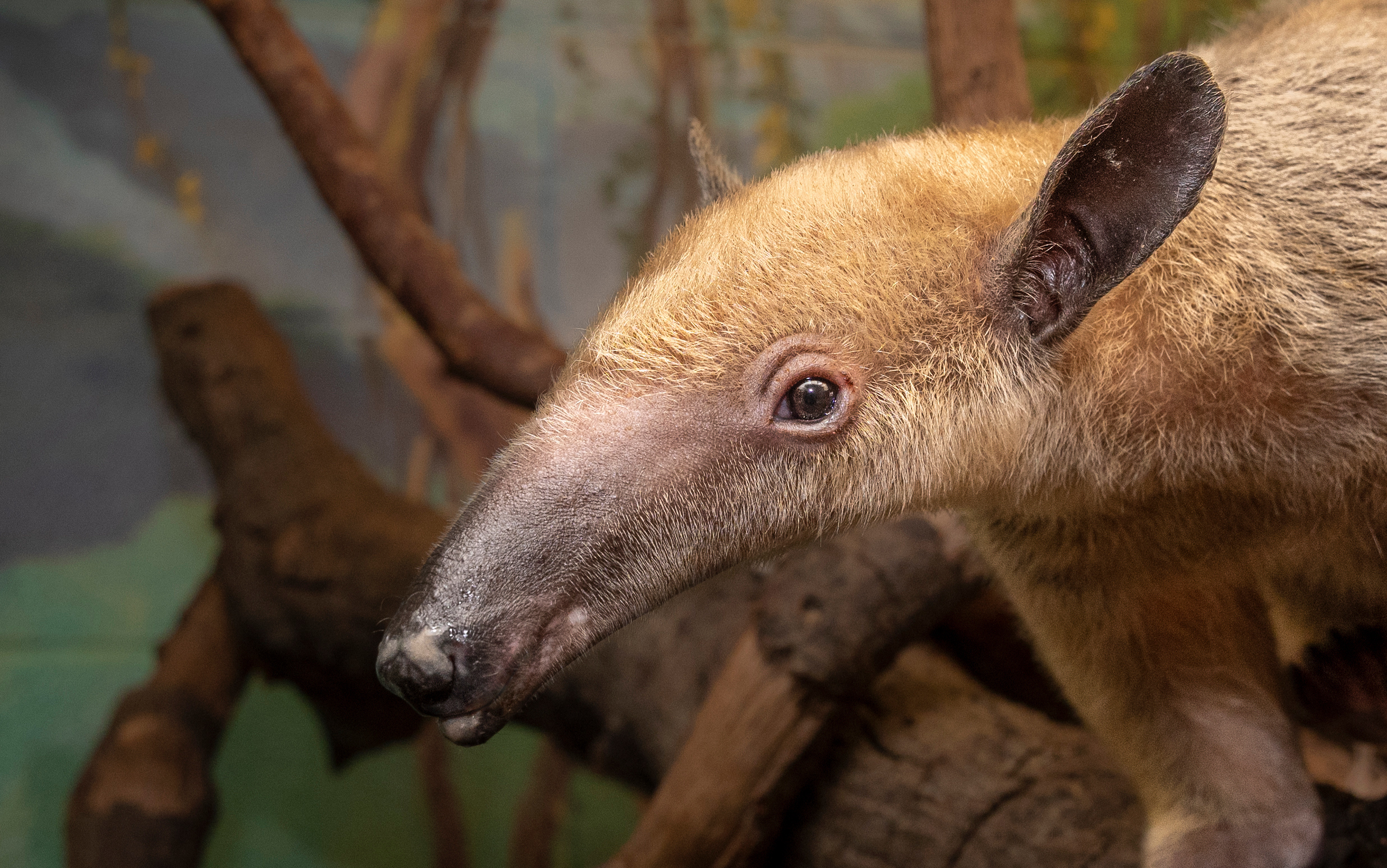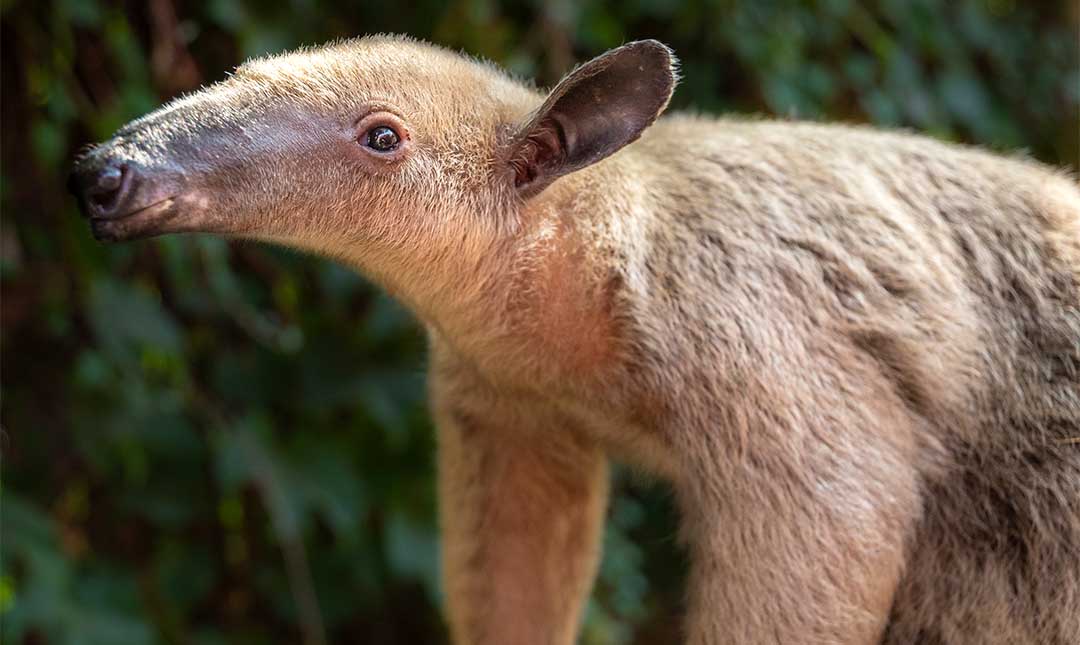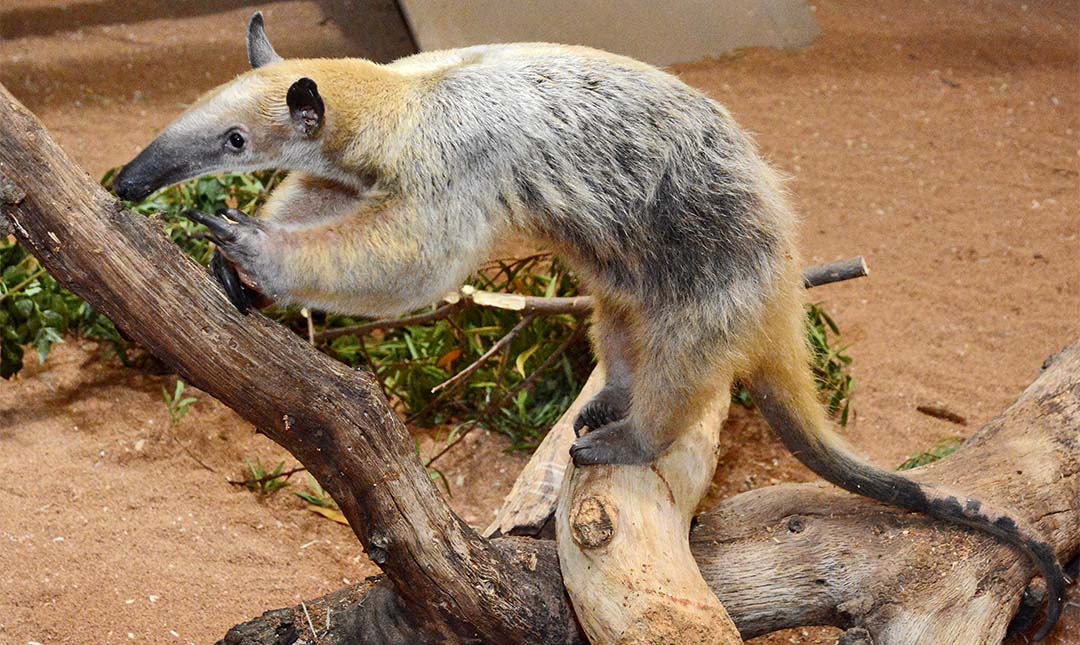About
This South American anteater uses strong claws to dig small holes in ant or termite nests and lick up the insects as they exit. Tamanduas do not have teeth, but their 16-inch-long tongues are covered with tiny rear-facing spines coated with thick saliva. To protect their claws and keep them sharp, tamanduas walk on the sides of their feet with their claws turned inward.
Tamanduas use their sharp claws and prehensile tails to climb trees and hold onto branches in pursuit of ants, termites, bees, and even honey. Using their sense of smell, they seek out the less aggressive tree termites and avoid leaf-cutting and army ants who have chemical defenses. Tamanduas are solitary and conserve their energy by resting in tree hollows. Common predators include harpy eagles, hawk eagles, and the spectacled owl. When threatened, a tamandua may hiss and release a foul odor. As a last resort, they will back up against a tree trunk, rear up on their hind legs, using their tail as a tripod, and slash at attackers with their long, sharp claws.



Habitat
Tamanduas are found in forests, shrublands, and savannas of Colombia, Venezuela, French Guiana, Guyana, Suriname, Uruguay, and Argentina.
Diet
These insectivores specialize in consuming termites, ants, beetle larvae, cocoons, bees, and honey. An adult can typically consume 9,000 ants and termites per day.
Physical Characteristics
Tamanduas’ body length averages between 21 and 35 inches with their tails adding an additional 16 inches. Weight ranges between 8 and 19 pounds. Lifespan in the wild is unknown, but in human care, it averages nine years.
LOCATION WITHIN THE ZOO
You’ll find this animal in the Winnick Family Children’s Zoo. See Zoo Map.




